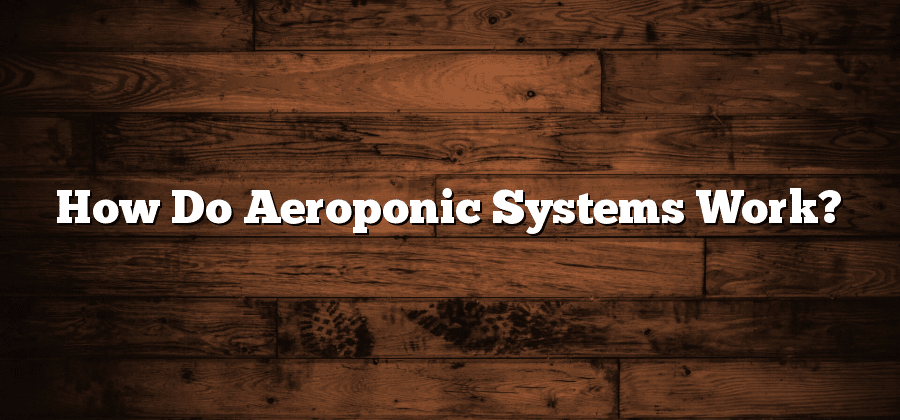Overview of Aeroponic Systems
Aeroponic systems are a cutting-edge method of cultivating plants without the use of soil. Instead, these systems rely on a nutrient-rich mist that is delivered directly to the roots of the plants. This innovative approach offers several advantages over traditional farming methods, including increased growth rates, higher yields, and better nutrient absorption.
One of the key features of aeroponic systems is their ability to provide plants with high levels of oxygen. By suspending the plant roots in a misty environment, the roots have access to more oxygen than they would in a soil-based system. This promotes faster growth and leads to healthier, more vigorous plants. Additionally, since the roots are not confined to a container or medium, they are able to expand more freely, allowing for greater nutrient uptake and overall plant performance.
The Concept of Nutrient Film Technique
Nutrient Film Technique (NFT) is a hydroponic system that has gained popularity in recent years due to its efficiency and effectiveness. In this system, a thin film of nutrient-rich water flows continuously over the roots of the plants, providing them with the necessary nutrients.
One of the key advantages of the Nutrient Film Technique is its ability to maximize nutrient absorption by the plants. The continuous flow of nutrient solution ensures that the roots are constantly supplied with a fresh supply of nutrients, promoting optimal growth and development. This system also allows for better aeration of the roots, preventing issues such as root rot and promoting healthier plant growth. Through the Nutrient Film Technique, farmers and gardeners can achieve higher yields and faster plant growth, making it a popular choice for those looking for efficient and effective hydroponic systems.
Understanding the Role of Mist in Aeroponics
A key component in the success of aeroponic systems lies in the role of mist. Mist, in the context of aeroponics, refers to the fine water droplets that are sprayed onto the roots of the plants. This mist provides a moist environment, essential for the effective absorption of nutrients by the roots. By enveloping the roots in a fine mist, aeroponics maximizes the surface area of the roots that are exposed to both water and nutrients, leading to improved nutrient uptake and enhanced plant growth.
One of the main advantages of using mist in aeroponics is its ability to increase oxygen availability to the roots. Unlike traditional soil-based systems, where the roots are surrounded by soil particles, aeroponic systems allow the roots to be exposed to air. The mist, in combination with the air, creates a highly oxygenated environment that encourages rapid root growth and efficient nutrient absorption. Additionally, the mist also helps to maintain an optimal temperature for the roots, ensuring that they do not become too hot or too cold, which could potentially hinder plant growth.
Importance of Proper Lighting in Aeroponic Systems
Proper lighting is an integral factor in the success of aeroponic systems. As with any plant cultivation method, lighting plays a crucial role in supporting plant growth and development. In aeroponics, where plants are grown without soil and receive nutrients through a misting system, the right amount and quality of light are essential to ensure optimal photosynthesis.
One of the key aspects to consider when it comes to lighting in aeroponic systems is the light intensity. Plants require a certain amount of light energy to carry out photosynthesis effectively. Insufficient light can result in stunted growth and poor overall plant health. On the other hand, excessive light can lead to heat stress and burns on the plant’s foliage. Therefore, finding the right balance and providing the correct intensity of light is critical for the success of the aeroponic system.
Selecting the Right Growing Medium for Aeroponics
Selecting the right growing medium for aeroponics is an essential step in ensuring the success of your aeroponic system. The growing medium plays a crucial role in supporting the plant’s roots and providing them with the necessary nutrients and oxygen they need to thrive.
One common choice for aeroponic systems is a sterile, soilless medium such as rockwool or coco coir. These mediums are lightweight, have excellent moisture retention capabilities, and allow for ample air circulation around the roots. They also have a neutral or slightly acidic pH, which is ideal for the majority of crops. Another option is the use of clay pebbles, which offer good drainage and aeration properties. Whatever medium you choose, it is important to ensure that it is clean and free from contaminants to prevent the growth of pathogens that can harm the plants.
In addition to the specific growing medium, consider the size and shape of the containers or baskets in which the plants will be placed. The container should allow for optimal root growth and should be designed to support the plant in an upright position. It’s also important to ensure that the medium fits securely within the container, preventing any shifting or displacement that could compromise the plant’s stability. Furthermore, consider the ease of maintenance and cleanliness of the medium. A medium that is easy to clean and reuse can save time and resources in the long run. Ultimately, the right growing medium will provide a stable and supportive environment for the plants, allowing them to grow vigorously and produce high-quality yields.






